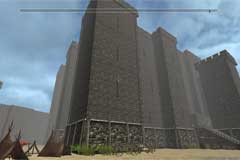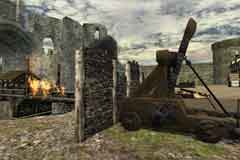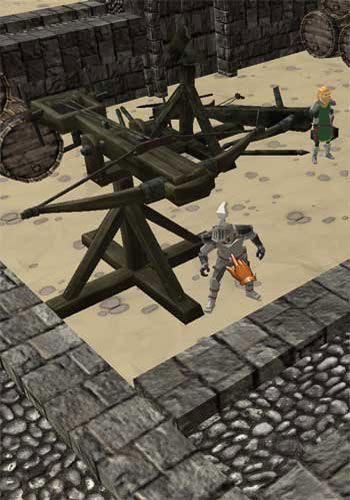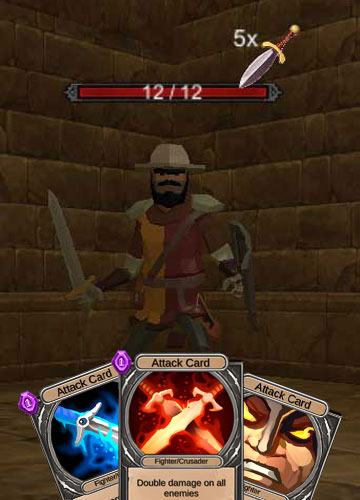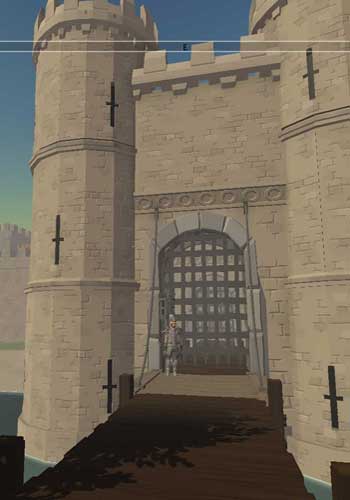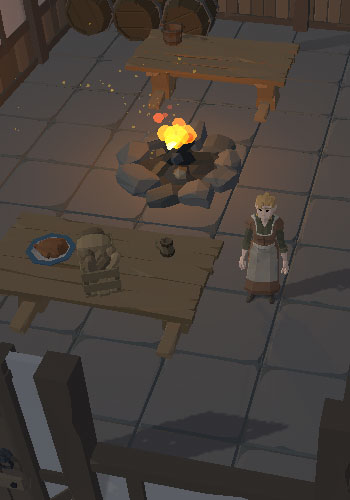
Medieval People
Click to view medieval people

Medieval People
Click to view medieval people

Medieval People
Click to view medieval people
Current Filter: Military
A
Ailettes: Small square metal plates or shields attached to the shoulders to protect against sword blows
Almayne Rivets: The style of armour where sections are fastened with rivets that are allowed to slide giving more freedom of movement
Anelace: A short sword with a broad blade used by both ordinary people and military
Angon: A six foot long spear for throwing. Used by Anglo-Saxons
Annulet: A ring around a circular pier or shaft. A circle on a shield used in heraldry
Arbalestier: A crossbow man
Arming Points: Strips of leather used to tie sections of armour together
Arrow-slit: A long narrow opening to shoot arrows through. Some are cross-shaped for crossbows
Aventail: Section of a helmet covering the lower face and neck for protection
Axe: Common medieval weapon with large blade fixed at ninety degrees to the handle
B
Backplate: Section of armour covering the back from neck to waist. Part of the cuirass
Badelaire: A cutlass or short sword
Bailey: The open area in a castle between the keep and the curtain wall. This area can have working and domestic buildings in it
Baldric: A belt worn around the neck an to the hip from which the sword was hung
Ballista: War engine used for throwing large arrows
Barbican: Outer defences of a castle where attackers would be vulnerable. Normally a double tower over a bridge or gate
Bardings: Armour for horses, covering neck and breast
Barmkin: Scottish term for a fortified castle courtyard. Similar to a barbican
Bartizan: A watch-tower or turret jutting out from the top of a castle (bartisan)
Baselard: A short sword or knife used in close combat
Basinet: A conically shaped helmet with open front. An aventail was added for face and neck protection
Bastion: A solid tower at the end or middle of a curtain wall
Battlemented: Describes the top of of a wall where there are rows of rectangular teeth. This is also known as crenellated or embattled
Berm: Strip of ground between the outer curtain wall and the moat
Bourdonasse: A lance for jousting that breaks easily on contact to prevent injuries
Brassarts: Armour for protecting the upper arm from elbow to shoulder
Breastplate: Armour to protect the chest. Part of the cuirass
Breteche: Hoardings: Wooden boards fitted to top of wall used as extra protection for defenders
Byrnie: A long shirt of leather or chain mail finishing at the elbows and reaching down to the knees
C
Camail: Chain mail armour covering the head and falling over the shoulders
Caryatid: A statue in female form used as a supporting pillar
Casemate: Bomb-proof vault in a curtain wall for cannons
Castellan: The governor of a castle or keep
Castellation: Another word for battlements. The defensive detail at the top of a wall or tower
Castle: Medieval fortification
Causeway: A bank built across marshy ground with a path running along the top
Chain mail: Flexible clothing made from interlinking rings of metal
Chanfron: Armour for horses covering the face
Cinque Ports: Ports on the south coast with special privileges. Originally five
Concentric: A concentric castle has a series of defences enclosing another
Constable: Person in charge of the defence of the castle.
Crenellation: Notched battlements at the top of a wall
Crinet: Armour for a horse to protect the neck area
Crossbow: A weapon able to shoot arrows. Lot of varieties
Crupper: Armour for a horse to protect the hind area
Crusade: Military expeditions to win back or hold on to the Holy Lands from the Muslims
Cuirass: Medieval armour covering the back (backplate) and chest (breastplate). Plain or ornately decorated
Curtain Wall: The wall around the bailey with a sentry-walk along its top
Cyclas: A sleeveless tunic
The TimeRef Shield Editor

